Color Change Garnet is a fascinating and relatively rare gemstone known for its unique ability to change color under different lighting conditions. It is a variety of garnet, which is a group of silicate minerals. What sets Color Change Garnet apart from other garnet varieties is its remarkable property of exhibiting different colors depending on the type of light it is exposed to.
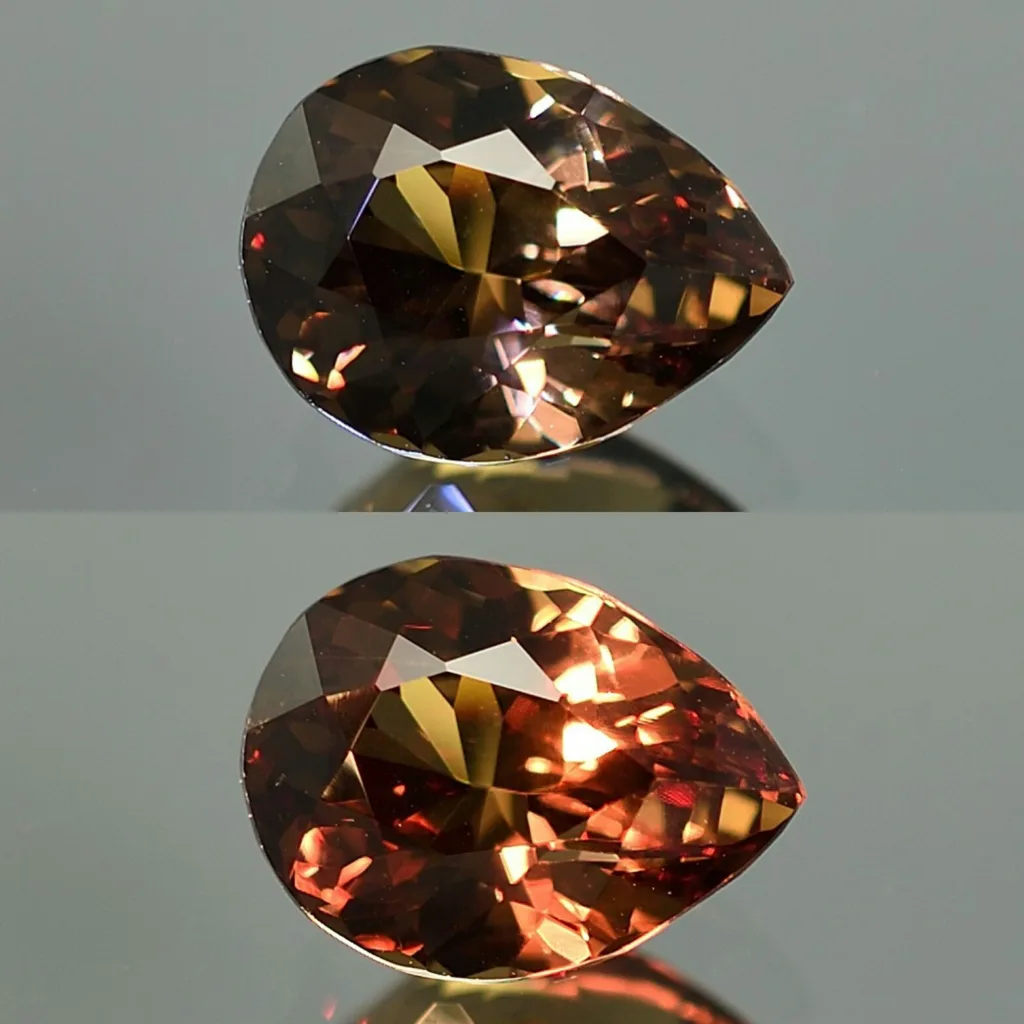
Color Change Garnet is a type of garnet gemstone that can exhibit distinct colors when viewed under different light sources. This phenomenon is caused by the presence of trace elements within the crystal structure of the garnet, which interact with light to produce varying colors.
Color-Changing Properties: The color-changing properties of Color Change Garnet are its most distinguishing feature. Typically, it appears green or bluish-green under daylight or fluorescent lighting conditions. However, when the gemstone is exposed to incandescent or candlelight, it can undergo a remarkable transformation and shift in color to a reddish or purplish hue. This color change is often described as a transition between daylight and incandescent light.
The underlying science behind this phenomenon lies in the way different light sources affect the absorption and reflection of specific wavelengths of light by the trace elements within the garnet’s crystal lattice. In daylight, the garnet absorbs more of the longer-wavelength green and blue light, making it appear greenish. In incandescent light, it absorbs more of the shorter-wavelength red and yellow light, resulting in a shift towards the reddish spectrum.
The most highly prized Color Change Garnets exhibit a vivid and pronounced change in color, with a clear distinction between their green and red hues. The intensity of the color change, as well as the overall quality of the gem, can significantly influence its value in the gemstone market.
Overall, Color Change Garnet is a captivating gemstone that combines the allure of two distinct colors within a single stone, making it a sought-after choice for collectors and jewelry enthusiasts alike. Its unique ability to adapt to different lighting conditions adds to its desirability, making it a gemstone appreciated for both its aesthetic beauty and intriguing optical properties.
Characteristics of Color Change Garnet

- Chemical Composition and Mineral Structure:
- Color Change Garnet is a variety of the garnet group of minerals, which have the general chemical formula (X3Y2)(Si3O12), where X and Y represent different metallic elements.
- The most common type of Color Change Garnet is typically composed of calcium (Ca), aluminum (Al), silicon (Si), and oxygen (O). It may also contain traces of other elements such as iron (Fe) and chromium (Cr), which play a crucial role in its color-changing properties.
- The crystal structure of garnets is isometric (cubic), and they usually form dodecahedron or trapezohedron-shaped crystals.
- Colors Exhibited Under Different Lighting Conditions:
- Color Change Garnet displays a unique phenomenon known as pleochroism, where it exhibits different colors when viewed under various light sources.
- Under daylight or fluorescent lighting, it typically appears green or bluish-green, often resembling the color of emerald or green tourmaline.
- When exposed to incandescent light or candlelight, it undergoes a noticeable color shift to shades of red, purplish-red, or even brownish-red.
- The transition between these colors can be quite striking and is highly valued in Color Change Garnets.
- Factors Influencing Color Change:
- The primary factors influencing the color change in Color Change Garnet include trace elements, crystal structure, and the interaction of light with the gem.
- Chromium (Cr) and vanadium (V) are the trace elements most commonly associated with the color-changing properties in garnets. These elements can replace some of the aluminum ions in the garnet’s crystal lattice.
- The absorption and reflection of specific wavelengths of light by the trace elements in the garnet’s crystal structure are responsible for the color change effect. In daylight, these elements absorb longer-wavelength green and blue light, resulting in the greenish color. In incandescent light, they absorb shorter-wavelength red and yellow light, causing the reddish shift.
- The quality and intensity of the color change in Color Change Garnet can vary depending on the concentration of trace elements, the purity of the crystal, and the cut of the gem.
- Factors such as the presence of inclusions, the angle of observation, and the type of light source also influence the perceived color change.
In summary, Color Change Garnet is known for its distinct color-changing properties, transitioning from greenish hues in daylight to reddish tones in incandescent light. These characteristics are a result of the garnet’s chemical composition, particularly the presence of trace elements like chromium and vanadium, as well as its crystal structure and the way it interacts with different types of lighting. The quality of the color change is influenced by a combination of factors, making this gemstone highly valued for its unique optical effects.
Types of Garnets
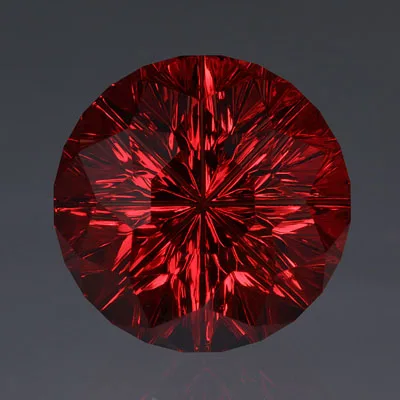
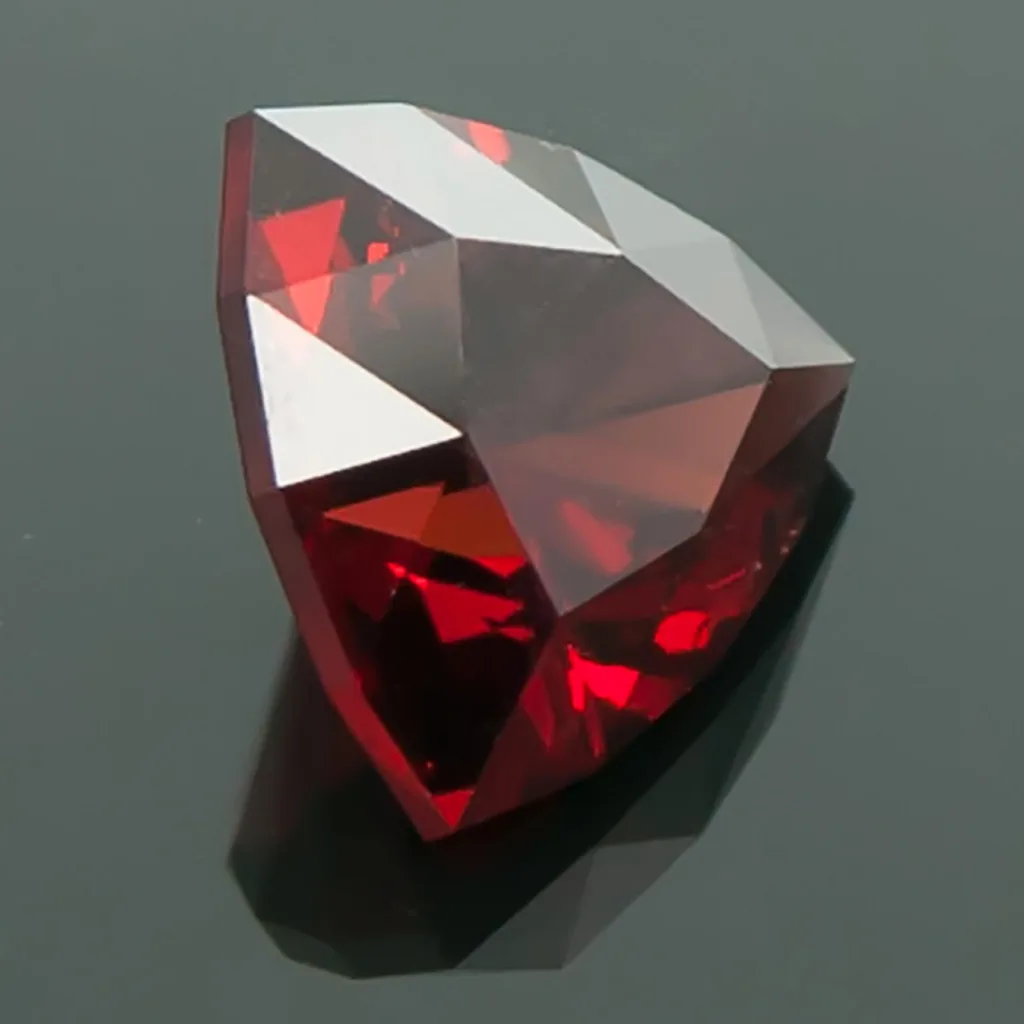



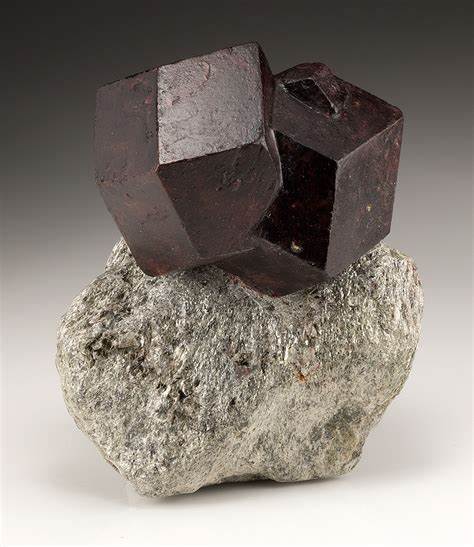
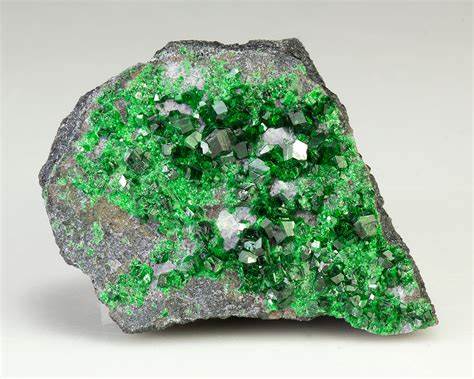
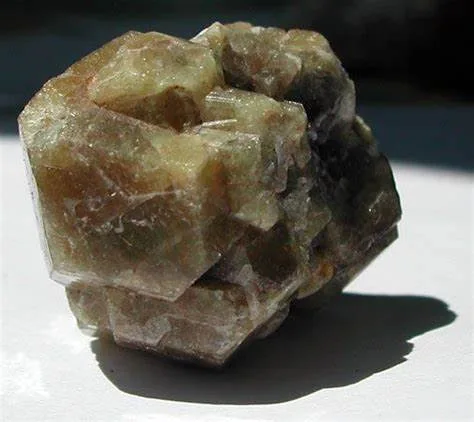
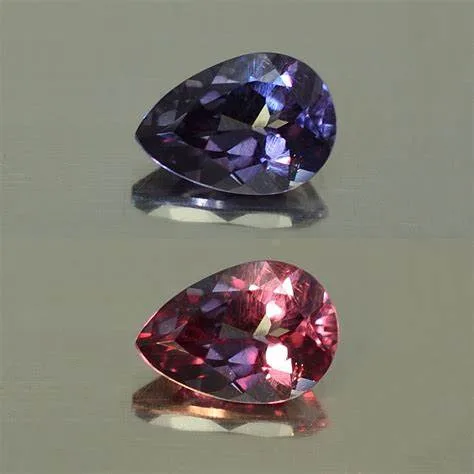
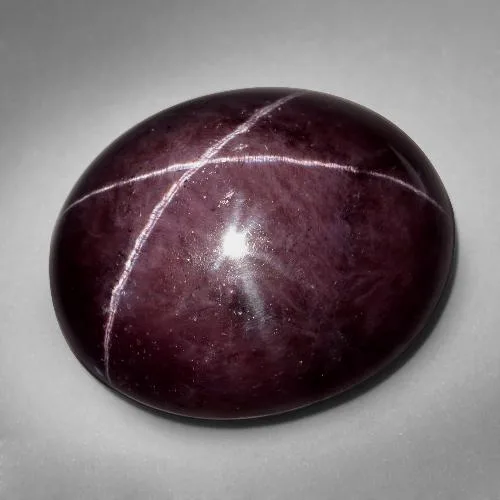
Garnets are a diverse group of minerals, and there are several distinct varieties, each with its own unique characteristics and color variations. Here’s an overview of some of the most well-known garnet varieties and how they differ from Color Change Garnet:
- Color Change Garnet:
- As discussed earlier, Color Change Garnet is known for its remarkable ability to change color under different lighting conditions, typically transitioning from green or bluish-green in daylight to red or purplish-red in incandescent light.
- The color change is primarily attributed to the presence of trace elements like chromium and vanadium within the garnet’s crystal structure.
- Pyrope Garnet:
- Pyrope garnets are famous for their deep red to purplish-red color. They are often referred to as “Bohemian garnets” and are known for their rich, fiery appearance.
- Unlike Color Change Garnet, pyrope garnets do not exhibit a color change effect. They are prized for their consistent red hues.
- Almandine Garnet:
- Almandine garnets typically range from deep red to reddish-brown in color. They are among the most common garnet varieties.
- Almandine garnets, like pyrope garnets, do not display a color change property and are valued for their consistent deep red tones.
- Spessartine Garnet:
- Spessartine garnets are known for their orange to reddish-orange colors. They can also occur in brownish-red and yellowish hues.
- Unlike Color Change Garnet, spessartine garnets maintain their orange or reddish-orange appearance regardless of the lighting conditions.
- Grossular Garnet:
- Grossular garnets encompass a wide range of colors, including green, yellow, orange, and brown. The green variety, known as Tsavorite, is particularly prized for its vibrant green color.
- Grossular garnets, including Tsavorite, do not exhibit the color-changing properties found in Color Change Garnet.
- Andradite Garnet:
- Andradite garnets can come in various colors, including green (Demantoid), yellow (Topazolite), and brown to black (Melanite).
- Demantoid garnets are celebrated for their intense green color but do not possess the color-changing characteristic seen in Color Change Garnet.
- Uvarovite Garnet:
- Uvarovite garnets are typically bright green in color due to their high chromium content.
- While they share the green coloration with Color Change Garnet under some lighting conditions, Uvarovite garnets are not known for exhibiting a color change effect like Color Change Garnet.
In summary, Color Change Garnet is a distinct variety of garnet known for its unique color-changing properties. While other garnet varieties like pyrope, almandine, spessartine, grossular, and andradite come in various colors and are valued for their individual characteristics, they do not display the same color-changing phenomenon as Color Change Garnet. This makes Color Change Garnet a particularly sought-after and intriguing gemstone in the world of garnets and gemstone jewelry.
Occurrence, Sources and Mining
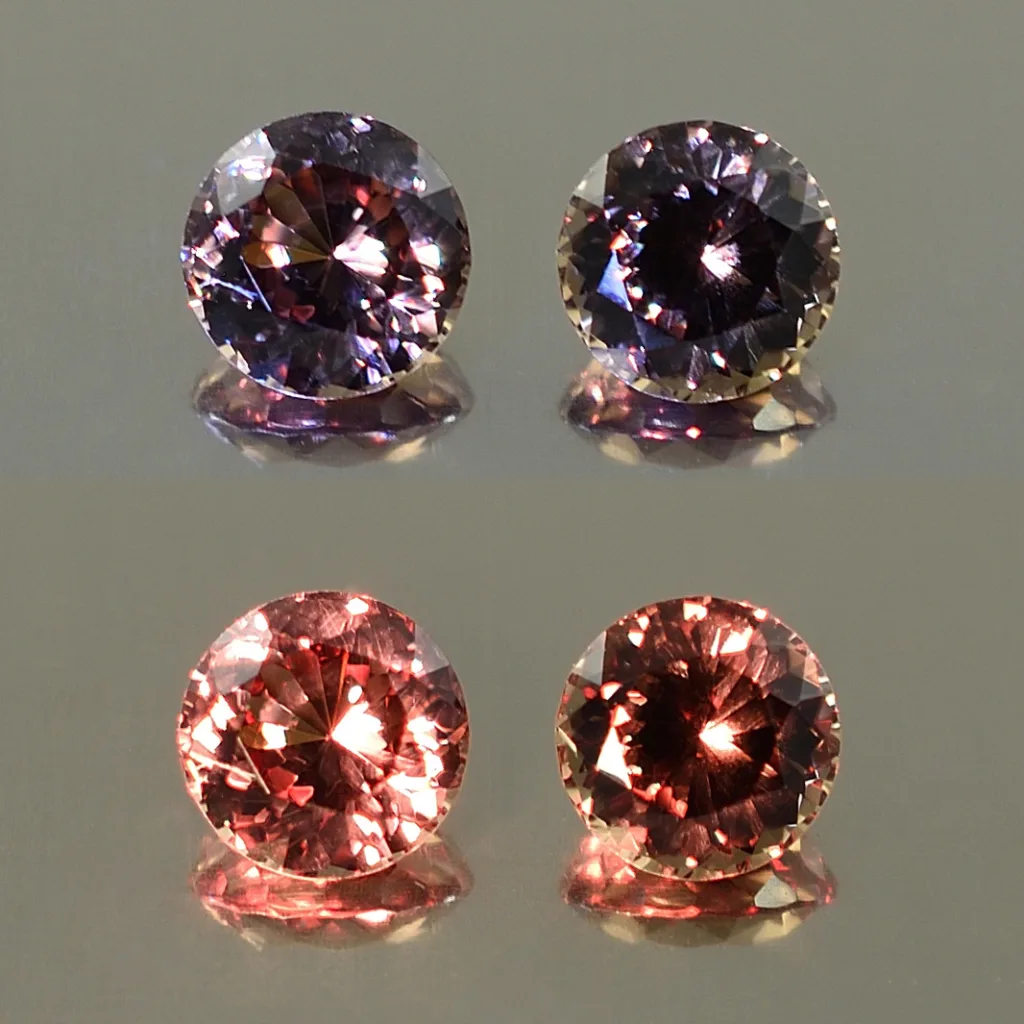
Color Change Garnet, like other garnet varieties, can be found in various locations around the world. Here’s some information about its occurrence, sources, and the mining process:
Occurrence and Sources:
- Tanzania: One of the most famous sources of Color Change Garnet is the Umba Valley in Tanzania. The region is known for producing high-quality Color Change Garnets with a distinct and pronounced color shift from green to red under different lighting conditions. These gems are often referred to as “Umbalite.”
- Kenya: Another East African country, Kenya, has also been a source of Color Change Garnets. The Taita-Taveta region in Kenya is known for producing these gemstones, including some beautiful examples with strong color changes.
- Sri Lanka: Color Change Garnets have also been found in Sri Lanka, although they are less common compared to other gemstones like sapphires and rubies in this region.
- Madagascar: Madagascar has become a notable source of Color Change Garnets in recent years. These garnets are typically found in the Antsiranana (Diego Suarez) region and have gained popularity for their attractive color-changing properties.
- Other Localities: Color Change Garnets can also be found in smaller quantities in other locations, such as Russia, Myanmar (Burma), and the United States. However, these sources are not as well-known for this specific garnet variety.
Mining Process: The mining process for Color Change Garnet is similar to that for other gemstones and typically involves the following steps:
- Exploration: Miners or mining companies search for areas that may contain garnet deposits. Geological surveys, prospecting, and the study of rock formations can help identify potential sites.
- Extraction: Once a suitable location is identified, mining operations commence. Garnets are typically found in alluvial deposits, which means they are often obtained from riverbeds, alluvial plains, or gravel pits. Miners may use shovels, bulldozers, or dredges to extract the material.
- Sorting and Washing: The extracted material is transported to a processing facility where it is sorted and washed. Water is used to separate the garnets from other minerals and debris.
- Grading and Cutting: After the garnets are separated, they are graded based on their quality and size. High-quality Color Change Garnets are selected for cutting and faceting to maximize their beauty and color-changing properties.
- Faceting and Polishing: Skilled gem cutters facet the garnets into various shapes and sizes, aiming to enhance their brilliance and display the color-changing effect to its fullest potential.
- Market Distribution: The finished Color Change Garnets are then distributed to gemstone dealers and jewelry manufacturers, where they may be incorporated into jewelry designs or sold as loose gemstones.
It’s essential to note that the mining of gemstones, including Color Change Garnet, can have environmental and ethical considerations. Responsible mining practices and ethical sourcing of gemstones are becoming increasingly important in the industry to ensure sustainable and ethical gemstone production.
Applications and Uses Areas
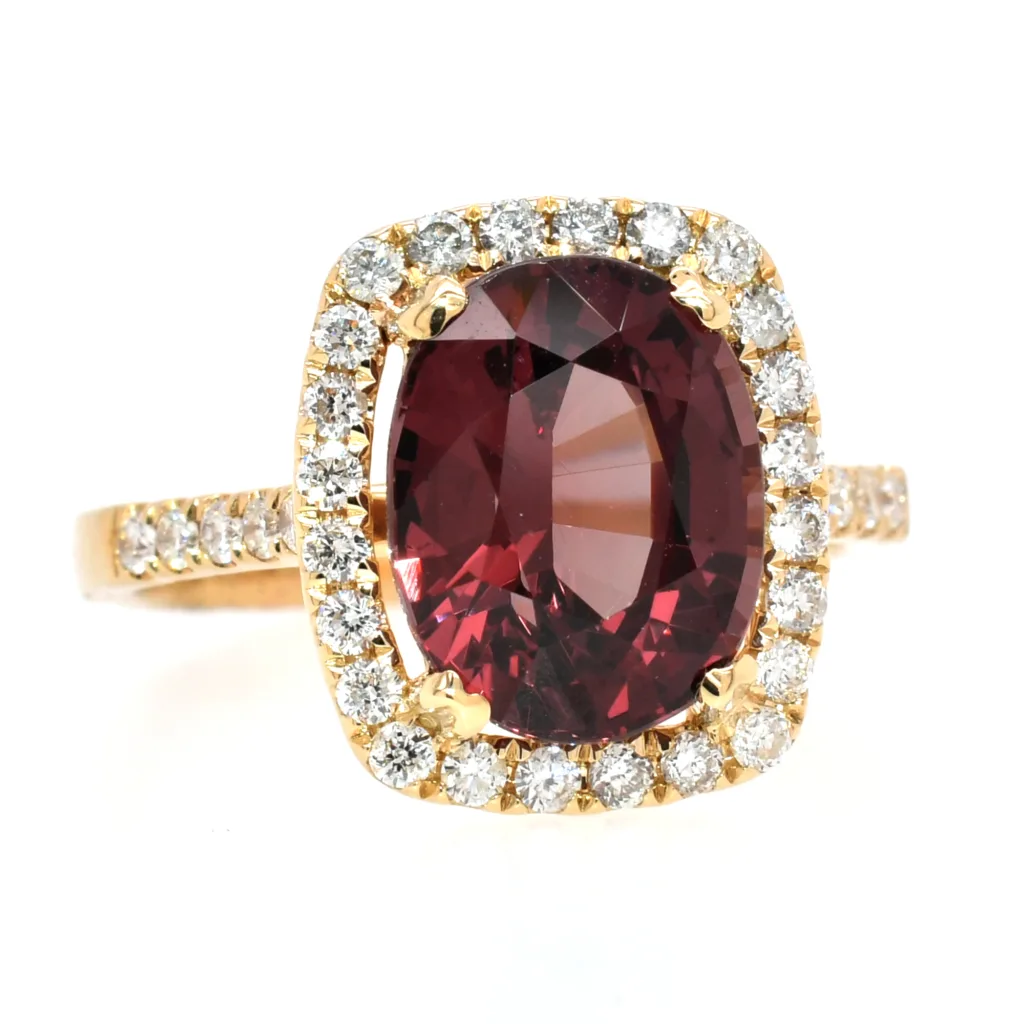
Color Change Garnet, like other gemstones, has a variety of applications and uses in both the jewelry and collector markets due to its unique and captivating color-changing properties. Here are some common applications and use areas for Color Change Garnet:
- Jewelry: Color Change Garnet is often used in jewelry, where its remarkable color-changing effect can be showcased. Some popular jewelry items that feature Color Change Garnet include rings, pendants, earrings, and bracelets. It is especially prized for its use in statement pieces and as a center stone in various designs.
- Collectible Gemstones: Gemstone collectors and enthusiasts value Color Change Garnet for its rarity and distinct optical properties. Collectors may acquire loose Color Change Garnets or specimens for their personal collections.
- Custom Jewelry: Jewelry designers and artisans often incorporate Color Change Garnet into custom or bespoke jewelry pieces. Its unique color transformation can be used to create one-of-a-kind jewelry creations.
- Birthstone Jewelry: While not a traditional birthstone, some people choose Color Change Garnet as an alternative birthstone for January, which is traditionally associated with red garnets. It can provide a unique and personalized touch to birthstone jewelry.
- Fashion Accessories: Color Change Garnet can also be used in fashion accessories such as brooches, cufflinks, and tie pins, adding a touch of elegance and sophistication to formal attire.
- Investment: Some individuals consider high-quality Color Change Garnets as an investment, hoping that their rarity and desirability will result in appreciation in value over time.
- Healing and Metaphysical Uses: In some cultures and belief systems, certain gemstones, including Color Change Garnet, are believed to possess healing or metaphysical properties. They may be used in spiritual practices, meditation, or as personal talismans.
- Lapidary Art: Gemstone artisans and lapidaries may use Color Change Garnet for carving, inlay work, or as focal points in sculptures and decorative pieces.
- Educational and Museum Displays: Museums and educational institutions may use Color Change Garnet specimens in displays, exhibits, or educational materials to illustrate the optical properties of gemstones and minerals.
It’s important to note that the use of Color Change Garnet, like any gemstone, depends on factors such as its quality, size, and color-changing effect. High-quality specimens with strong and distinct color changes are more likely to be sought after for use in fine jewelry and collector pieces. Additionally, the ethical sourcing of gemstones is increasingly important, and consumers and jewelers alike often seek responsibly mined and sourced Color Change Garnets to ensure sustainability and ethical practices in the industry.




































